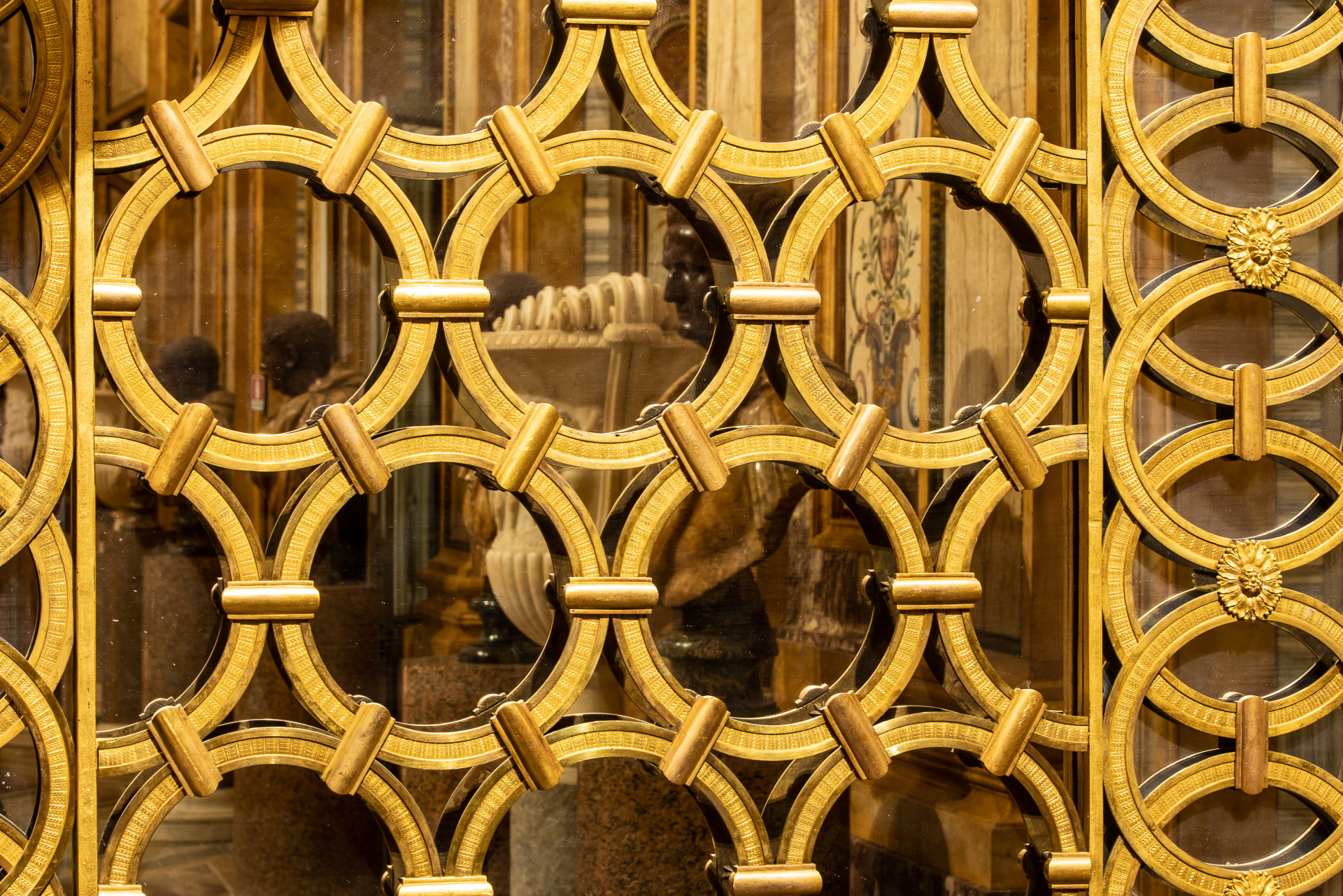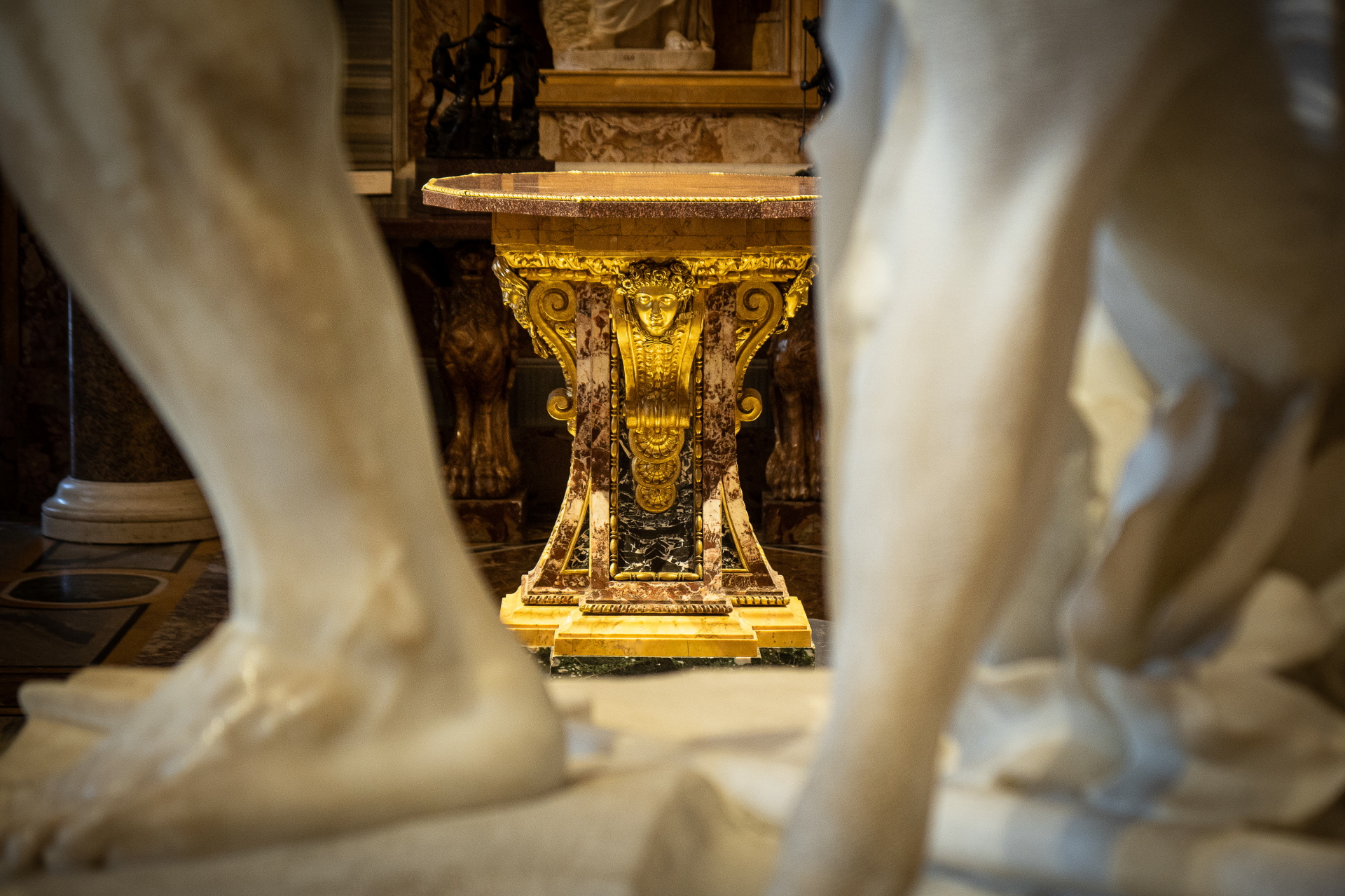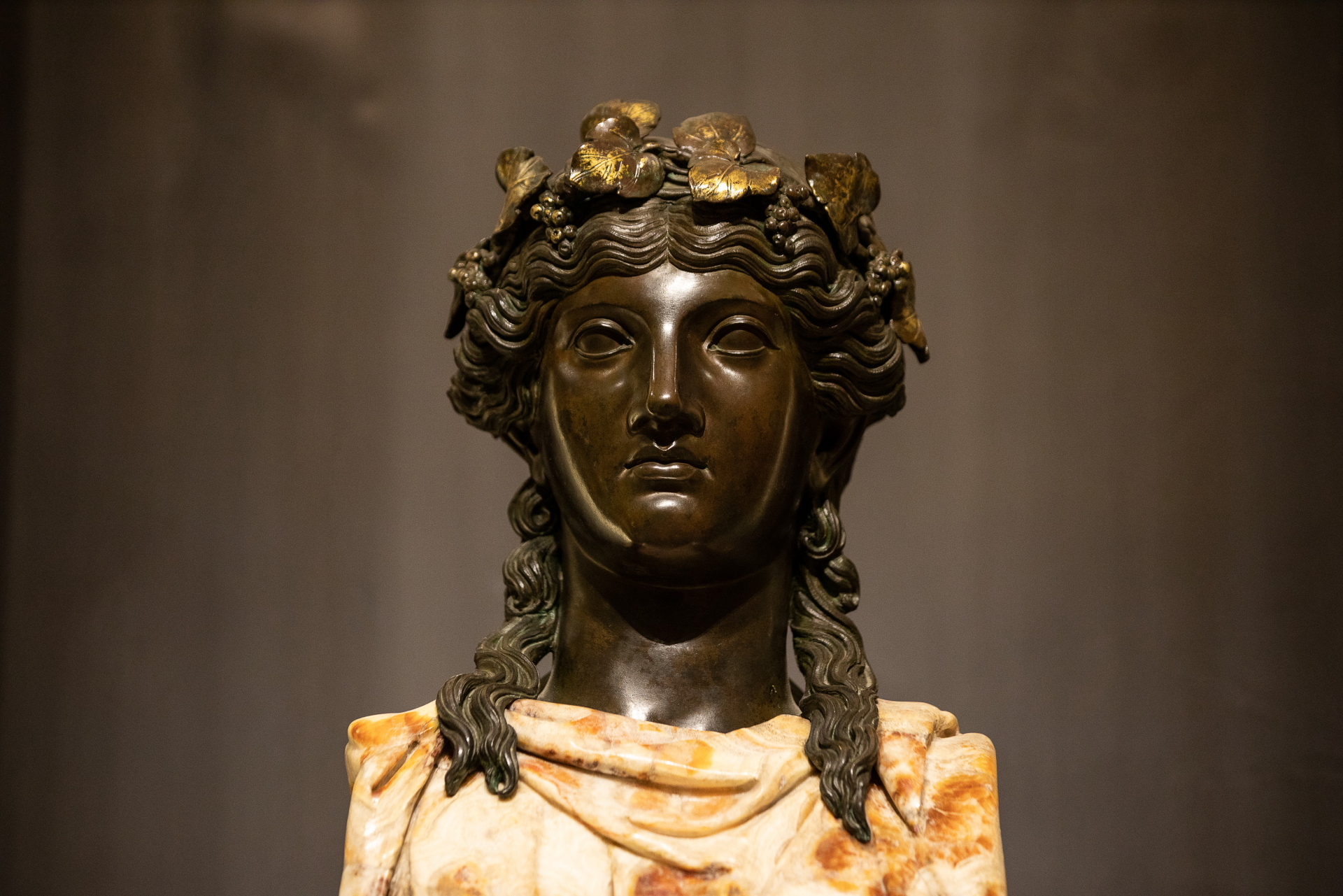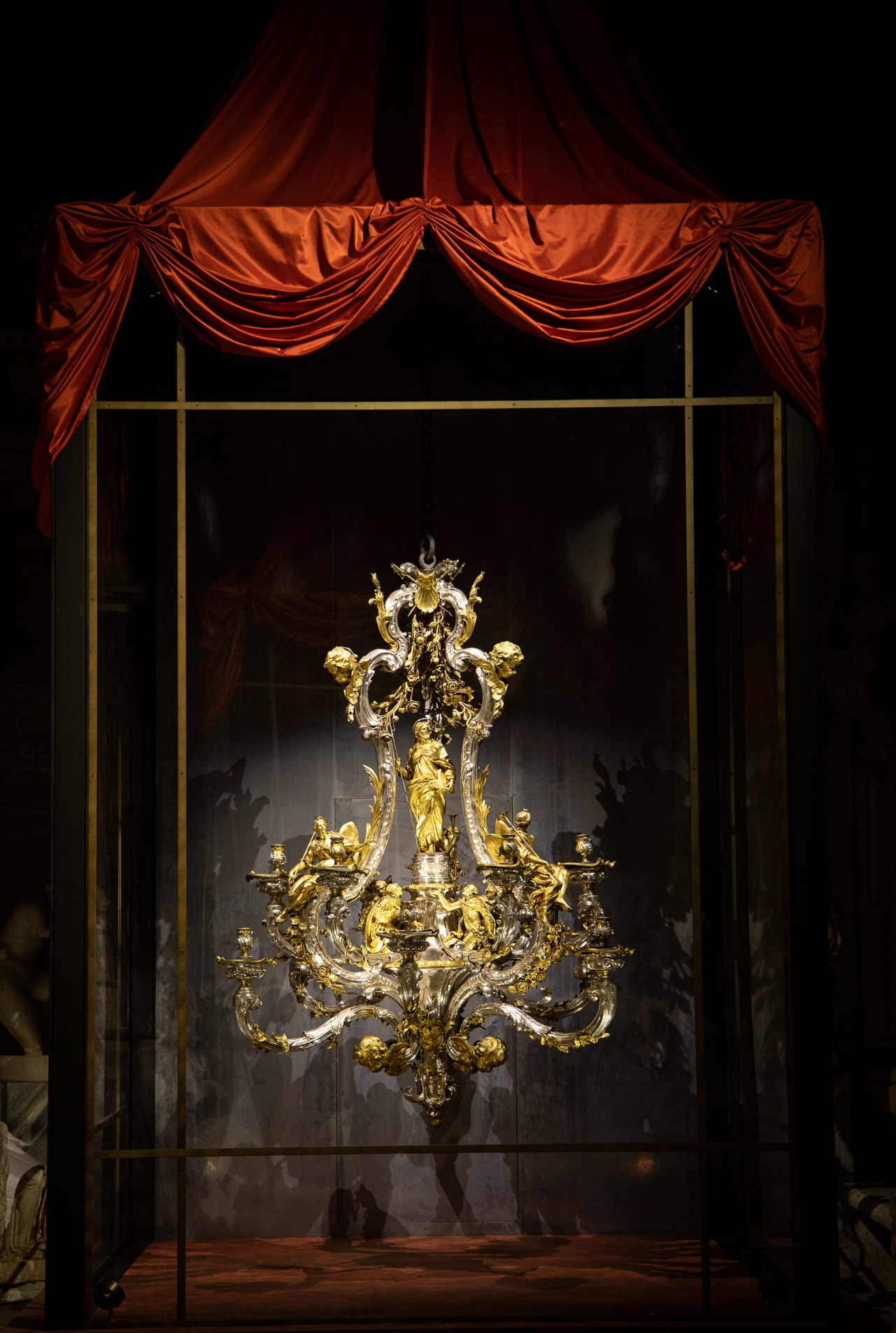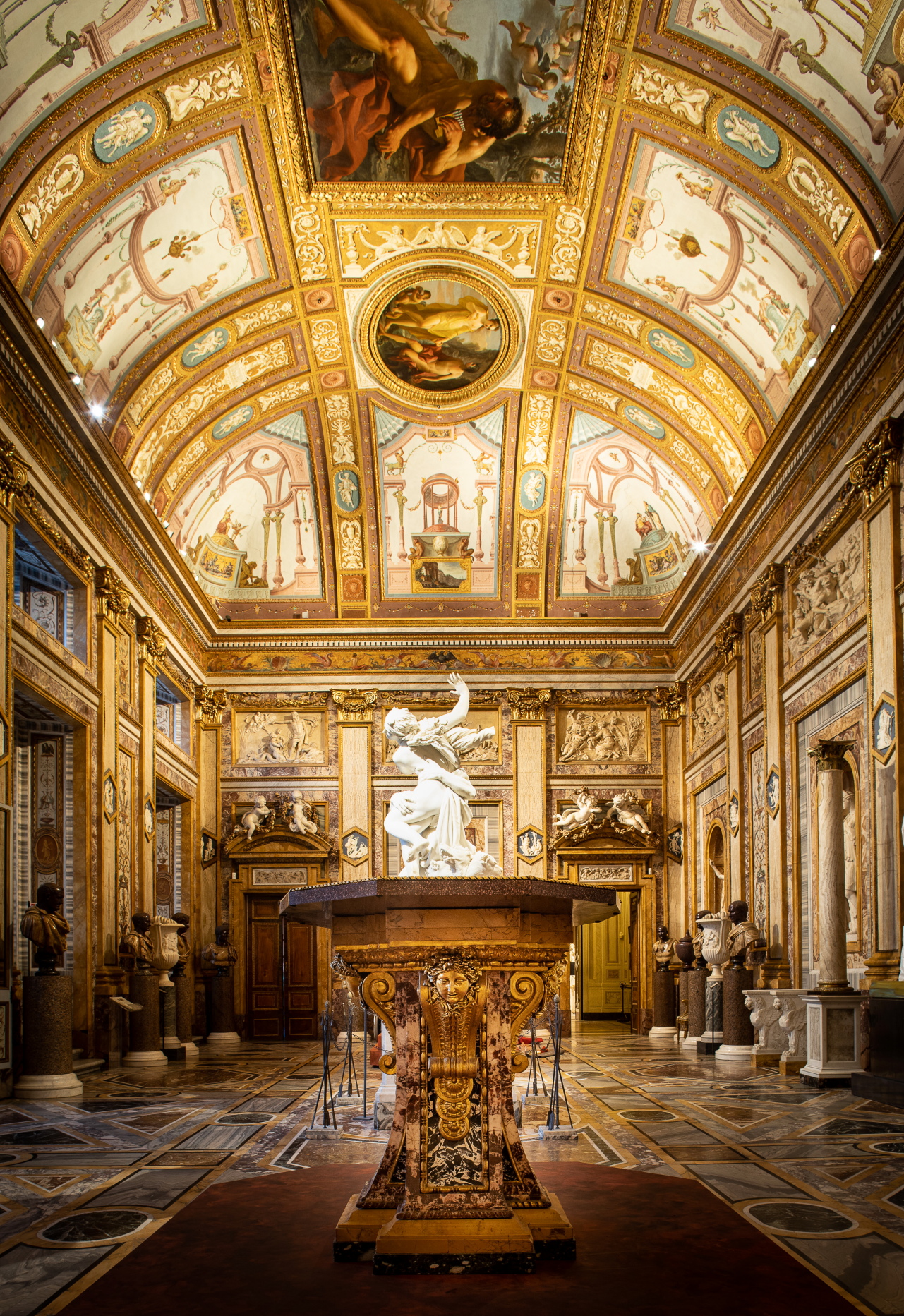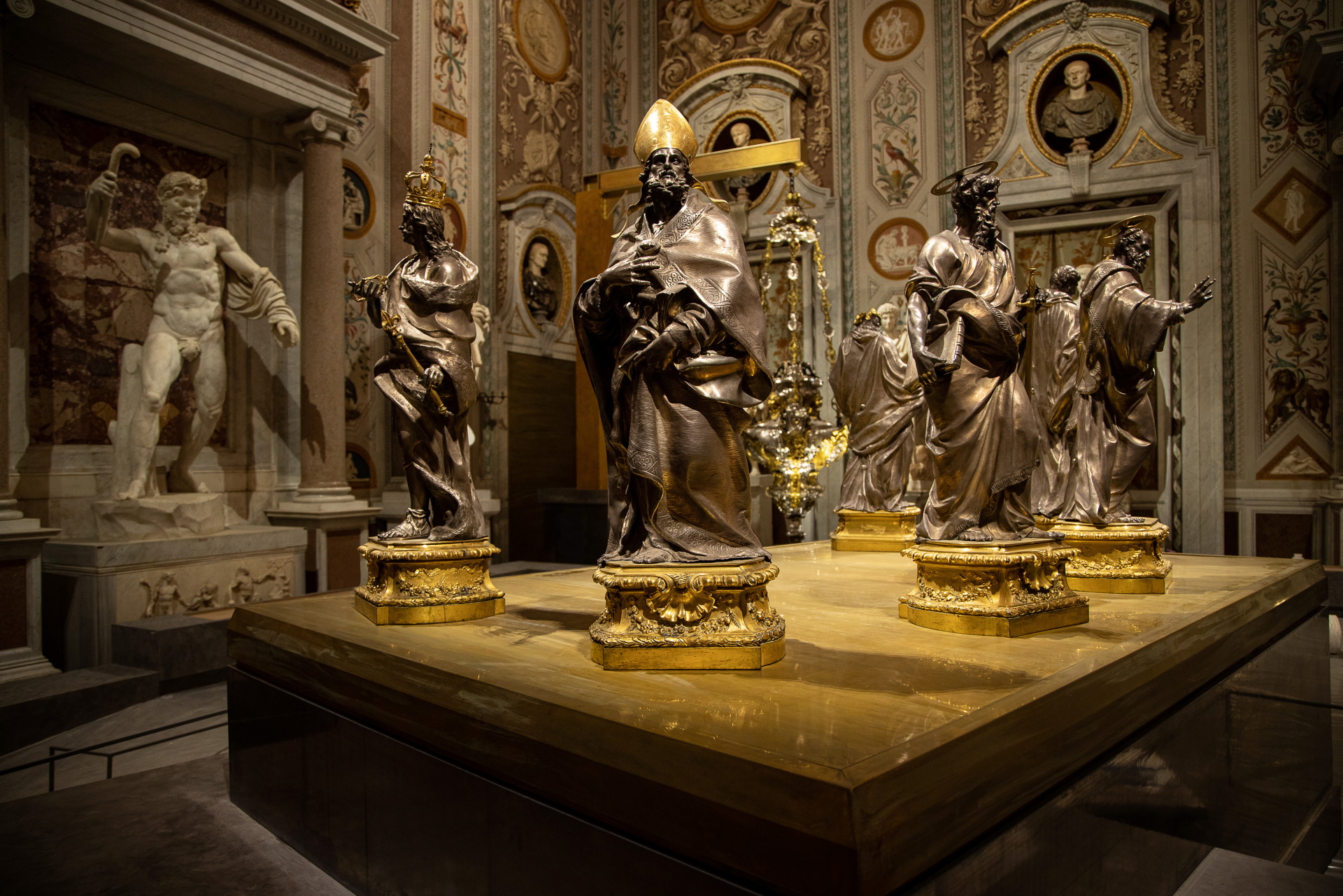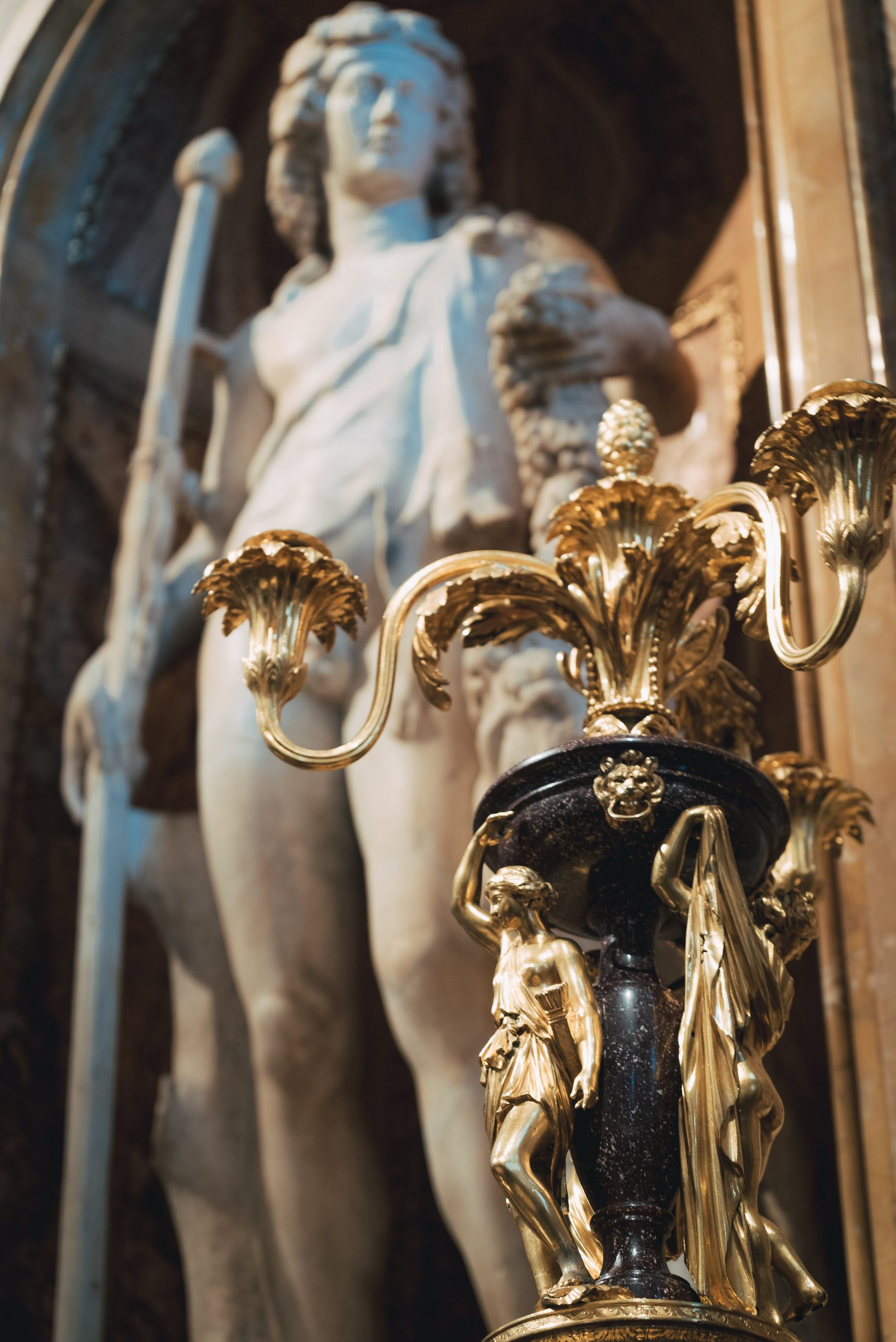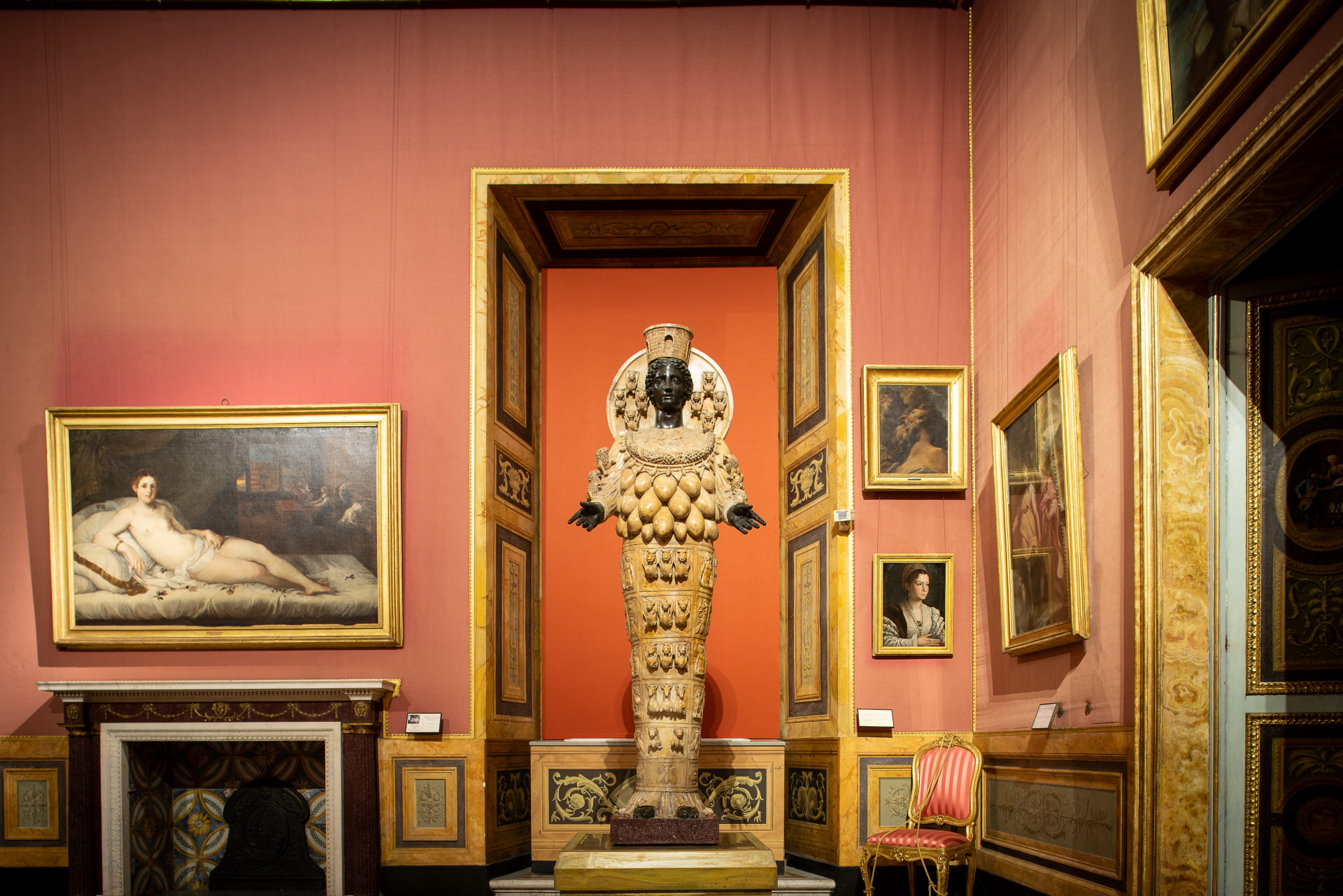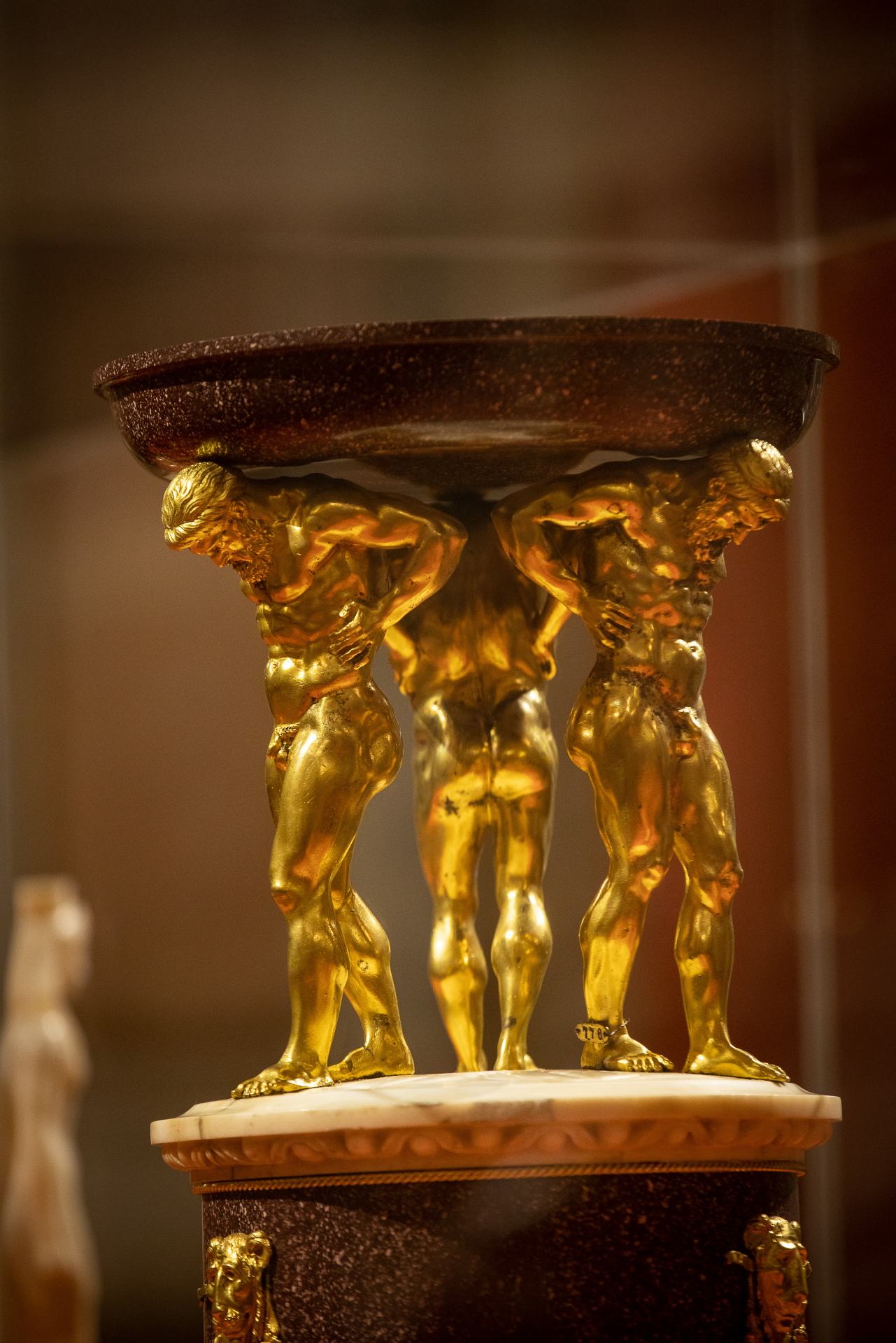Splendor in Eighteenth-century Rome

The major monographic exhibition of Fall 2019 is devoted to Luigi Valadier, the most celebrated Italian goldsmith of his age and one of the protagonists of the cultural climate that developed in Rome in the middle of the eighteenth century.
The remarkable synthesis of versatile creativity and unparalleled technical skill, combined with Valadier’s ability to interpret the new feeling for antiquity, led to a renewal in taste that became established as an international model in Rome, making his renowned workshop on via del Babuino a favorite destination for royalty, diplomats, collectors, antiquarians, and grand tourists.
In 1759 Luigi Valadier took over the workshop of his father Andrea, a French silversmith who settled in Rome in the second decade of the century. The first works for the Borghese family date to that year: the revamping of the family chapel in Santa Maria Maggiore and that of the Santissimo Sacramento of San Giovanni in Laterano. This marked the beginning of an intense collaboration that lasted for over twenty-five years, through until the artist’s death in 1785.
But what the exhibition seeks to highlight is the truly unique opportunity to admire the works of the great artist and artificer within a decorative context – the Villa Borghese – that itself expresses and conveys the particular co-presence of painters, sculptors, and artisans, under the direction of the architect Antonio Asprucci, in the refurbishment of the city Palazzo and the suburban Villa undertaken at the wishes of Prince Marcantonio IV Borghese; artists who, in those same years, not only worked together on many of the major artistic projects in Rome but whose direct dealings with Luigi Valadier are widely documented. This is the case, to cite just one example, of the marble cutter Lorenzo Cardelli, formerly active in the workshop of Piranesi, who collaborated on the execution of the fireplace in one of the rooms of the Gallery, decorated by Valadier with bronze applications, and on the production of items for Anglo-Saxon clients.
The Villa, which houses a number of Valadier’s masterpieces, including the Herm of Bacchus and the pair of Dodecagonal Tables, is a compendium of the dominant taste in Rome around the middle of the century; sophisticated decorative apparatuses offer dazzling examples of a declining Rococo taste, co-existing with new stylistic tendencies inspired by antiquity. In this particular cultural context, viewed in its broadest sense, Valadier was the leading light.
If the patronage of the Borghese family represented the underlying thread of Valadier’s practice, the range and number of his clients reveal the extraordinary success of his career as a gold and silversmith, emphasizing the vastness of field, the originality and the international character of his output, represented in the exhibition with a number of important works. The loans range from the large silver lamps made for the cathedral of Santiago di Compostela to the Saint John the Baptist of the Lateran Baptistery, on display for the first time outside their original homes; from the pontifical mass service of the cathedral of Muro Lucano to the sculptures for the cathedral of Monreale. Also on view are the bronze reproductions of well-known ancient statues made for King Gustav III of Sweden, Madame du Barry, and the count of Orsay; the fine mounting for the cameo of Augustus, made to a commission from Pius VI for the Museo Sacro e Profano in the Vatican, in addition to the artist’s extraordinary creations for his superb desers (table centerpieces), like the one commissioned by the Bailli de Breteuil and then sold to Catherine II of Russia, which is now in Saint Petersburg, and the reconstruction of the temple of Isis in Paestum for Maria Carolina of Austria.
An important section of the show is given over to drawings, a fundamental tool for understanding the evolution of Valadier’s creative process and its articulation through the activities of what was a large and complex workshop. The invaluable volume of the Pinacoteca Comunale in Faenza, fully catalogued for the first time on the occasion of the show, offers a varied overview, and can also be admired by way of digital reproductions. The drawings also provide testimony of works that have now been lost, such as the magnificent gilt silver dinner service made for the Borghese family, the few surviving items of which have been brought together for the exhibition.
The show features several multimedia totems devoted to the Places of Luigi Valadier in Rome: sites, churches, palazzos and other spaces that house the artist’s works or are in any case significant, such as the house and workshop in via del Babuino. The invitation is to transfer this virtual route into reality, to better understand the “Roman” Valadier, who contributed to the decoration of the most splendid and “modern” Villa of delights in the Eternal City, but who also expressed a sophisticated and widely imitated international taste that spread from Rome to the whole of Europe.
Curated by Anna Coliva

